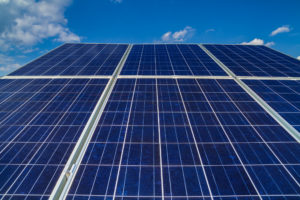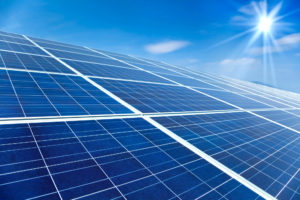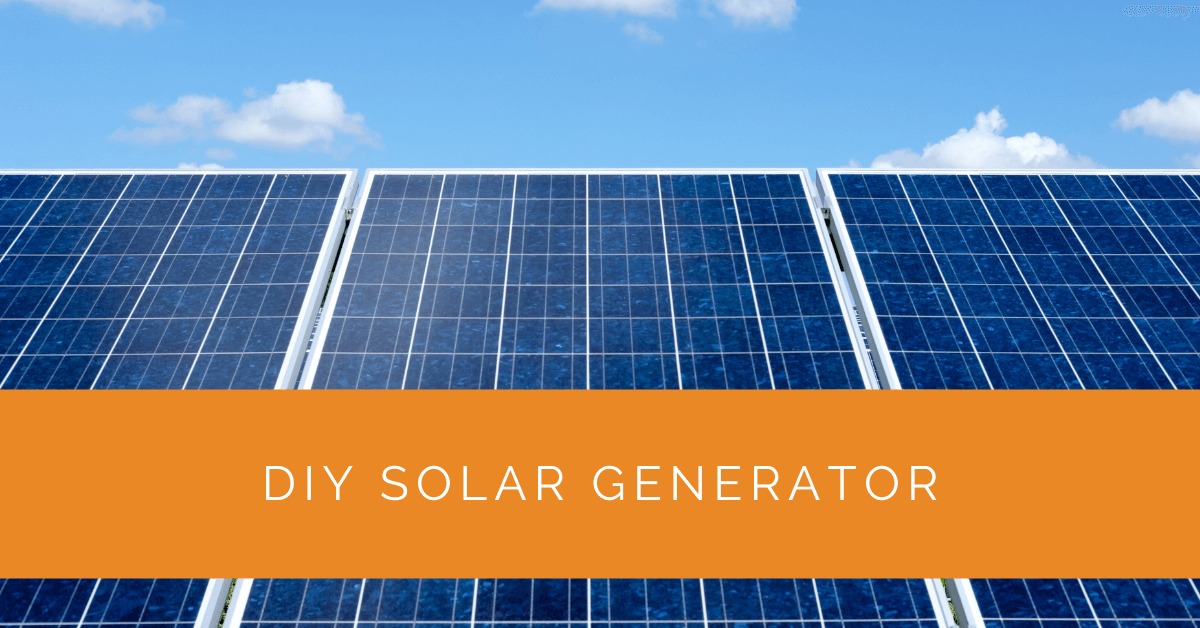In an era where portable power is increasingly essential, building a DIY solar generator offers an excellent solution. Harnessing solar power, this guide will provide a detailed step-by-step process to help you construct your own reliable and eco-friendly portable solar generator.
Contents
Understanding the Basics of a Solar Generator
To embark on your DIY solar generator project, it’s crucial to comprehend the fundamental components and their functions. Let’s explore each component in more detail:
Solar Panels
Solar panels, also known as photovoltaic (PV) panels, consist of interconnected solar cells that harness sunlight and convert it into electricity. These panels are composed of layers of semiconducting materials that generate a flow of electrons when exposed to sunlight. The generated direct current (DC) electricity is then used to power various devices or stored in a battery for later use.
When selecting solar panels for your DIY solar generator, consider efficiency, durability, and wattage factors. High-efficiency panels ensure maximum power generation, while durable panels are designed to withstand various weather conditions. Additionally, the solar panels’ wattage determines how much power they can produce, so choose panels that align with your energy needs.
Inverter
The inverter is a crucial component of your DIY solar generator as it converts the DC electricity produced by the solar panels into usable alternating current (AC) electricity. AC power is what most appliances and devices in our homes and workplaces require for operation.
When selecting an inverter, look for a pure sine wave inverter. Unlike modified sine wave inverters, pure sine wave inverters produce a smooth, clean power output compatible with sensitive electronic devices. This ensures your DIY solar generator can power various appliances, including laptops, TVs, refrigerators, etc.
Charge Controller
A charge controller is essential for proper charging and managing the battery in your DIY solar generator. It regulates the charging process to prevent overcharging or deep discharging, which can damage the battery.
Different types of charge controllers are available, with pulse width modulation (PWM) and maximum power point tracking (MPPT) being the most common. PWM controllers are cost-effective and suitable for smaller systems. In contrast, MPPT controllers are more efficient and can maximize the power output of your solar panels, especially in situations where shading or temperature variations occur.
Battery
The battery is a crucial component that stores the electricity generated by the solar panels for use when the sun is not shining or during periods of high demand. It acts as a reservoir of power, allowing you to have electricity available even when sunlight is limited.
Lithium-ion batteries are commonly used in DIY solar generators due to their high energy density, longer lifespan, and ability to provide reliable power storage. When selecting a battery, consider factors such as capacity (measured in amp-hours), voltage compatibility with your system, depth of discharge, and the number of cycles it can withstand. Choose a battery that aligns with your energy requirements and provides the necessary backup power for your intended applications.

Planning Your DIY Solar Generator
Before diving into the construction process of your DIY solar generator, thorough planning is essential. This involves considering various factors to ensure the system is well-designed and tailored to your needs.
Assessing Power Needs
To determine the size and capacity of your DIY solar generator, it’s important to assess your power needs accurately. Begin by creating a comprehensive list of the appliances and devices you intend to power. Note their power ratings in watts and estimate their daily energy consumption in watt-hours.
Summing up the power requirements of each device will give you an idea of the total wattage and energy storage capacity you’ll need. This information will guide your selection of solar panels, batteries, and other components to ensure your DIY solar generator can meet your power demands.
Choosing the Right Components
Choosing the right components for your DIY solar generator is crucial to ensure compatibility, efficiency, and usability. Here are some considerations when selecting each component:
Solar Panels
When choosing solar panels, consider the following factors:
- Efficiency: Look for solar panels with high energy conversion efficiency to maximize power output.
- Durability: Opt for panels designed to withstand various weather conditions and have a long lifespan.
- Wattage: Determine the total wattage needed to be based on your power requirements and select panels that can meet or exceed that capacity.
- Size and Portability: Consider the physical dimensions and weight of the panels, especially if you plan to use the solar generator in portable applications.
Inverter
When selecting an inverter, take the following factors into account:
- Power Output: Ensure the inverter can handle the maximum power output of your solar panels.
- Pure Sine Wave: Choose a pure sine wave inverter to ensure compatibility with sensitive electronics and appliances.
- Surge Capacity: Consider whether the inverter can handle short-term power surges, which may occur when starting certain devices or appliances.
Charge Controller
Consider the following aspects when choosing a charge controller:
- Voltage Compatibility: Ensure the charge controller is compatible with the voltage of your solar panel array.
- PWM or MPPT: Decide whether a PWM or MPPT charge controller suits your system requirements, considering factors such as shading, temperature variations, and cost-effectiveness.
Battery
When selecting a battery for energy storage, consider the following factors:
- Capacity: Determine the energy storage capacity (amp-hours) needed based on your daily energy consumption and desired backup power duration.
- Voltage Compatibility: Ensure the battery voltage matches the requirements of your system.
- Depth of Discharge: Consider the battery’s recommended depth of discharge (DoD) to maximize its lifespan.
- Cycle Life: Look for batteries with many cycles to withstand frequent charging and discharging.

Building Your DIY Solar Generator
Once you have a thorough plan and the necessary components, it’s time to begin building your DIY solar generator. Here’s an in-depth guide to the construction process:
Step 1: Preparing the Workstation
Before starting the assembly, set up a dedicated workspace that is clean, well-lit, and properly ventilated. Gather all the necessary tools, including screwdrivers, wire cutters, crimping tools, and wrenches, to facilitate construction. It’s important to have a clear and organized workspace to ensure safe and efficient work.
Step 2: Mounting the Solar Panel
Mount the solar panel securely to a suitable structure or frame. Position it at an angle and orientation that maximize sunlight exposure throughout the day. Consider factors such as local climate, shading from nearby objects, and the direction of sunlight. Secure the panel with appropriate brackets or mounting hardware, ensuring stability and durability.
Step 3: Installing the Inverter, Charge Controller, and Battery
Carefully follow the manufacturer’s instructions to connect the inverter, charge controller, and battery. Pay attention to proper wiring and polarity, using the correct cable sizes and connectors for safe and efficient electrical connections. Ensure all connections are tight and secure. Proper grounding is essential for safety, so follow local electrical codes and guidelines.
Step 4: Wiring and System Integration
Connect the solar panel, charge controller, battery, and inverter using the appropriate wiring and connectors. Carefully route the wires, keeping them organized and protected from potential damage. Use wire management techniques such as cable ties or conduits to ensure a tidy and safe installation. Double-check all connections to ensure they are secure and properly insulated.
Step 5: Testing and Troubleshooting
Once the DIY solar generator is fully assembled, it’s crucial to conduct thorough testing to ensure optimal performance. Here’s a step-by-step guide for testing and troubleshooting:
- System Verification: Double-check all connections and wiring to ensure they are secure and properly connected. Verify that the solar panel, charge controller, battery, and inverter are all functioning correctly.
- Power-Up: Connect the solar panel to the charge controller and the battery to the charge controller and inverter. Power up the system and monitor the charge controller’s LED indicators to ensure it effectively receives and regulates the solar panel’s power.
- Voltage Measurement: Use a multimeter to measure the voltage at different points in the system, such as the solar panel output, charge controller input and output, battery terminals, and inverter input and output. Compare the measured and expected values to ensure everything is within the specified range.
- Load Testing: Connect a load, such as a light bulb or small appliance, to the AC output of the inverter. Verify that the solar generator powers the load and that the inverter can handle the load’s power requirements without any issues. Monitor the battery voltage and the inverter’s performance during the load test.
- Battery Performance: Monitor the battery’s voltage and charging status over time to ensure it is charging properly and holding a charge. Check for any signs of overcharging or undercharging, and adjust the charge controller settings if necessary.
- Troubleshooting: If any issues arise during testing, carefully inspect the connections, wiring, and components. Check for loose connections, faulty wiring, or improper settings. Consult the user manuals or contact the component manufacturers for troubleshooting guidance. Address any issues promptly to ensure the system operates safely and efficiently.
Remember, safety should always be a top priority during testing and troubleshooting. Take necessary precautions such as wearing appropriate personal protective equipment (PPE) and working in a well-ventilated area. If you encounter complex technical issues or are unsure about certain aspects, consult a professional or seek guidance from experienced professionals.

Enhancements and Customizations
Once your DIY solar generator is up and running, you can further explore various enhancements and customizations to optimize its performance and usability. Consider the following options:
Advanced Monitoring Systems
Install advanced monitoring systems that provide real-time data on your solar generator’s performance. These systems often come with mobile apps or web interfaces that allow you to monitor energy production, battery status, and power consumption. This valuable information helps you fine-tune your system, track energy usage patterns, and identify areas for optimization.
Additional Batteries for Extended Backup Power
Consider adding additional batteries to your system if you require a longer backup power duration. This increases the overall capacity and allows you to store more energy during extended periods without sunlight. Ensure the battery bank is properly sized and the charge controller can handle the increased capacity.
Mobile Charging Solutions
Incorporate USB ports and DC outlets into your DIY solar generator to provide direct charging capabilities for mobile devices like smartphones, tablets, and portable electronic gadgets. This enables convenient and on-the-go charging without needing adapters or additional power sources.
Portable and Modular Design
Design your DIY solar generator with portability and modularity in mind. Ensure that the components are securely mounted yet easily detachable for transportation. Consider using quick-connect connectors and modular designs that allow for easy expansion and reconfiguration of your system as your power needs evolve.
Integrated AC Power Outlets
If you plan to power larger appliances or tools, consider integrating AC power outlets into your DIY solar generator. Integrating AC power outlets into your DIY solar generator expands its compatibility with a wider range of appliances and tools. AC power outlets allow you to directly connect devices that require standard household power, such as laptops, fans, power tools, or small kitchen appliances. This feature enhances the versatility and usability of your solar generator, making it even more convenient for various applications.
Safety Considerations
When working with electricity, it’s crucial to prioritize safety to protect yourself and ensure the longevity and reliable operation of your DIY solar generator. Here are some key safety considerations to keep in mind:
Proper Wiring and Connections
Ensure all wiring connections are properly insulated, secure, and free from loose or exposed wires. Use appropriate wire gauges and connectors that can handle the current load. Double-check the polarity of connections to avoid potential short circuits or damage to the components.
Grounding and Overcurrent Protection
Proper grounding is essential to protect against electrical shock and ensure system stability. Follow local electrical codes and guidelines for grounding the solar panels, inverter, charge controller, and other components. Additionally, incorporate overcurrent protection devices such as fuses or circuit breakers to safeguard the system from potential overload or short circuits.
Battery Safety
Handle batteries carefully, following the manufacturer’s installation, maintenance, and storage instructions. Take precautions to prevent accidental short circuits or damage to the battery. Protect the battery from extreme temperatures and avoid overcharging or deep discharging, as it can shorten the battery’s lifespan and affect its performance.
System Maintenance and Inspection
Regularly inspect and maintain your DIY solar generator to ensure its optimal performance and longevity. Keep the solar panels clean and debris-free to maximize their energy conversion efficiency. Monitor the battery’s state of charge, and if using a lead-acid battery, check the electrolyte levels periodically. Examine the wiring connections for any signs of wear, corrosion, or loose connections, and address them promptly.
Proper Usage and Load Management
Use your DIY solar generator according to its intended purpose and specifications. Avoid overloading the system beyond its rated capacity, as it can lead to reduced efficiency and potential damage. Be mindful of the power requirements of the appliances and devices you connect to the generator, and ensure they are within the capacity of your system.
Professional Assistance
If you are uncertain about any aspect of building or operating your DIY solar generator, consult a professional electrician, solar installer, or engineer. They can provide guidance, ensure compliance with local regulations, and offer expertise to address complex technical issues or safety concerns.
By following these safety considerations, you can ensure the safe and reliable operation of your DIY solar generator, protect yourself and your property, and maximize the longevity and efficiency of your system.
Expert Insights From Our Solar Panel Installers About DIY Solar Generators
Creating a DIY solar generator involves understanding each component’s role. Proper selection and integration of solar panels, inverters, charge controllers, and batteries are crucial for a reliable and efficient system.
Senior Solar Installation Engineer
Safety in DIY projects cannot be overstated. Ensuring correct wiring, proper grounding, and overcurrent protection are essential steps to prevent electrical hazards and ensure the longevity of your system.
Lead Solar Technician
Tailoring your DIY solar generator to your specific power needs and ensuring it is modular and portable can significantly enhance its usability and efficiency, especially for outdoor or emergency use.
Solar Energy Consultant
Conclusion
Building your DIY solar generator empowers you with renewable and portable power. Understanding the basics of its components, thorough planning, meticulous construction, and safety consciousness is key to a successful and rewarding project. Enhancements and customizations allow you to tailor your solar generator to your needs and expand its capabilities.
Embrace the benefits of clean energy, energy independence, and reduced carbon footprint by creating your DIY solar generator. Enjoy the freedom of portable power, whether for outdoor adventures, emergency backup, or sustainable off-grid living. Start your DIY solar generator project today and take charge of your energy future. With careful planning, construction, and safety considerations, you can harness the sun’s power and enjoy the countless benefits of renewable energy.
About the Author
Solar Panels Network USA stands at the forefront of solar energy solutions, driven by a team of seasoned solar engineers and energy consultants. With over decades of experience in delivering high-quality solar installations and maintenance, we are committed to promoting sustainable energy through customer-centric, tailored solutions. Our articles reflect this commitment, crafted collaboratively by experts to provide accurate, up-to-date insights into solar technology, ensuring our readers are well-informed and empowered in their solar energy decisions.

